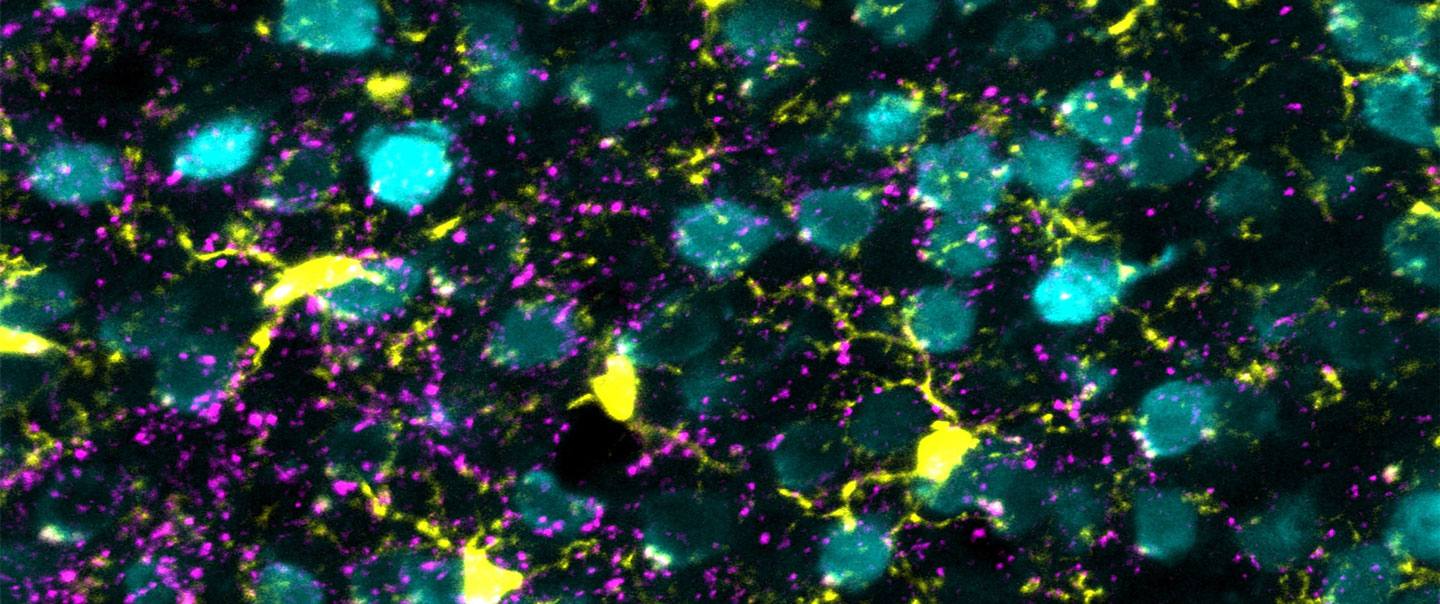-
 Neurosciences
NeurosciencesDancing cells show how the brain awakens from anesthesia
According to a Mayo Clinic study published in Nature Neuroscience, the cells that act as the central nervous system’s first line of defense against harm also play a role in helping the brain awaken from anesthesia. This discovery could help pave the way for innovative methods that address post-anesthesia complications.
When coming out of anesthesia, more than one-third of patients can experience either extreme drowsiness or hyperactivity, a side effect called delirium. Mayo researchers found that special immune cells in the brain called microglia can act to shield neurons from the aftereffects of anesthesia to awaken the brain.

"This is the first time we've seen microglia enhance and boost neuronal activity by physically engaging the brain circuits," says Mayo Clinic neuroscientist Long-Jun Wu, senior author of the study.
The researchers observed microglia wedging between neurons and inhibitory synapses, suppressing neural activity under anesthesia. The microglia appear to be trying to shield the neurons to counteract sedation.
The brain consists of a network of neurons that fire and spur activity throughout the body. Neurons are connected by synapses that receive and transmit signals enabling one to move, think, feel and communicate. In this environment, microglia help keep the brain healthy, stable and functioning. Although microglia were discovered more than 100 years ago, it wasn’t until the last 20 years that they became a serious research focus.
In the beginning, scientists only had fixed slides of microglia to examine, which offered still snapshots of these cells. Initially, it was thought that when neurons were not active and the brain was quiet, microglia were less active. Then technology made it possible to observe and study microglia in greater detail, including how they move.
"Microglia are unique brain cells because they have very dynamic processes. They move and dance around as they survey the brain. We now have powerful images that show their activity and movement," says Dr. Wu.
For several years, Dr. Wu and his team have been leading research into how microglia and neurons communicate in healthy and unhealthy brains. For example, they have shown that microglia can dampen neuronal hyperactivity during seizures from epilepsy.
In 2019, the researchers discovered that microglia can sense when the brain and its activity is being suppressed, for example, by anesthesia. They found that microglia become more active and vigilant when this occurs.
"We now can see microglia increase their surveillance and patrol the brain's neural activity like a police officer at night responding to suspicious activity when all else is quiet," Dr. Wu says.

Patients experiencing delirium or agitation when coming out of anesthesia can also feel hyperactive or experience extreme sluggishness. The researchers believe hyperactivity may result from the microglia intervening too much between the neuron and inhibitory synapses.
"If we can explore the role of microglia in various physiological states, such as sleep, we could apply this knowledge to improve patient care in clinical settings,” says Koichiro Haruwaka, Ph.D., lead author of the study and a Mayo Clinic senior research fellow.
Review the study for a complete list of authors, disclosures and funding.







